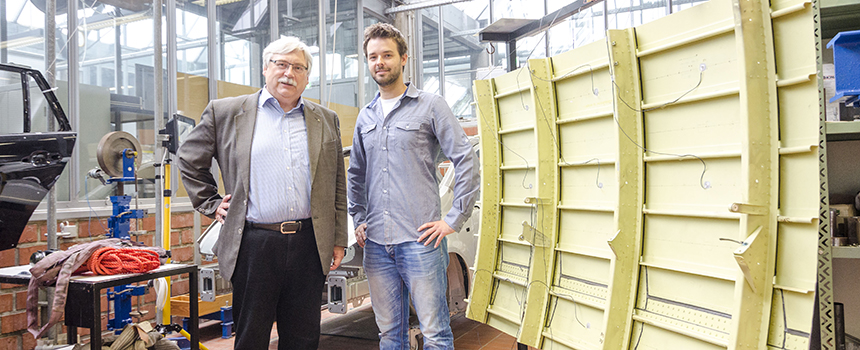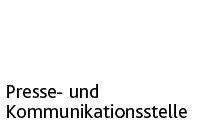New method developed for timely detection of impending material failure
 International acclaim: doctoral candidate at the University of Siegen develops new method for detecting impact damage more quickly and more accurately
International acclaim: doctoral candidate at the University of Siegen develops new method for detecting impact damage more quickly and more accurately
It's hailing and a small crack develops in the windscreen; it first goes unnoticed and eventually turns into a problem. This type of scenario, which usually spells annoyance and expense in the case of a car, can become dangerous when it comes to aerospace: it happens when material damage occurs as a result of brief high loads, such as those produced by a collision with a bird. The high performance fibre composite materials that are used are very sensitive to these kinds of impact loads. At the University of Siegen, Daniel Ginsberg has developed a new kind of monitoring system that registers an impact load more quickly and more accurately than other methods. Ginsberg uses fewer sensors than in previous methods, which makes load monitoring significantly less expensive and more attractive in terms of possible applications.
The doctoral candidate from the University of Siegen has already won international recognition for his paper entitled "Sparse Solution Strategy for Simultaneous Localization and Magnitude Estimation of Impact Loads". At this year's International Conference on Smart Materials and Structures in Vancouver, Canada, Ginsberg received the best student paper award. The article that was submitted gives an account of the significant interim findings of Ginsberg's doctoral thesis, which he is writing as a member of the working group directed by Siegen Professor Claus-Peter Fritzen, who co-authored the paper.
Superior to other methods
Load monitoring systems measure vibrations of the material. The vibrations can be used to reconstruct the location and intensity of an impact. This makes it possible to predict and prevent damaging after-effects, which could even include material failure.
Ginsberg's monitoring system uses a new calculation method and has applied algorithms from mathematics to the problem of force reconstruction. His method is superior to previous ones in a number of respects. "With other methods, the location of the impact has to be known for the force reconstruction," says Ginsberg. His calculations, by contrast, reveal the location of the impact, are more accurate and more reliable, and they require fewer sensors to achieve such results.

Photo: Prof. Claus-Peter Fritzen (l.) and doctoral candidate Daniel Ginsberg
